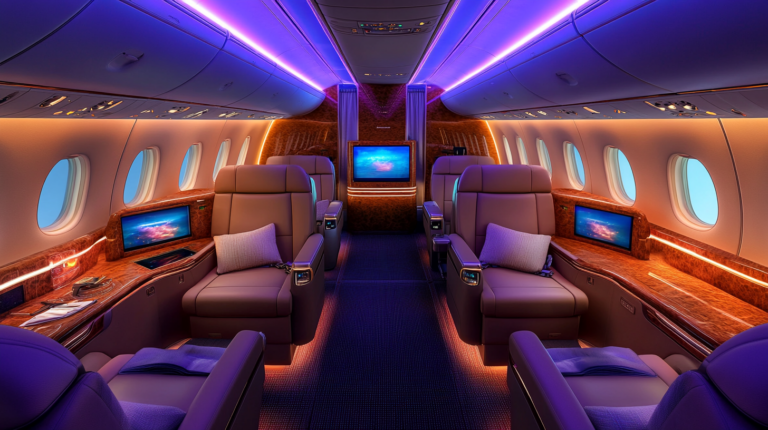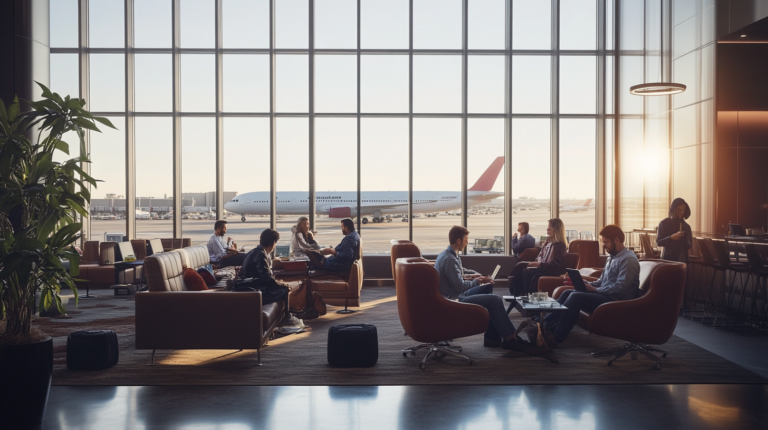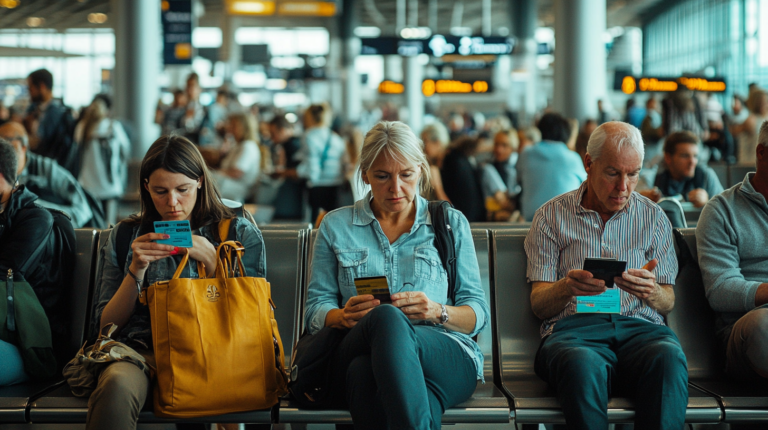10 Essential Hacks for Effortless Business Travel
Business travel may look glamorous, but I’ve observed that it can be filled with tight schedules, security lines, and unexpected snags. Many industry sources mention lists of over 100 tips, but with so much information out there, I’d rather focus on ten streamlined hacks that truly make a difference for frequent flyers. These fundamentals have repeatedly shown their value, keeping travelers calm, prepared, and ready to make the most of each trip.
1. Book Early (Preferably in Mornings)

Booking your flight three to six weeks in advance gives you a greater chance at snagging competitive fares. According to a 2024 study by the Global Business Travel Association, travelers who reserve flights at least 21 days ahead can save an average of 15–20% compared to those who wait until the last minute. From my perspective, I’ve watched too many travelers scramble to chase cheap seats days before departure—only to regret not booking sooner.
I also prefer early morning flights because they’re less prone to delays or scheduling mishaps. In 2023, airline data suggested that flights departing before 8 a.m. had a 25% lower chance of delay. I find it helps to reframe those early wake-up calls as a strategic move: no lines, less traffic, and a better start to a busy day.
One more tip: consider adding travel insurance if you’re booking non-refundable fares, especially when scheduling for business. It offers peace of mind in case you need to adjust at the last minute—saving both time and finances.
2. Prioritize Loyalty Programs

Loyalty programs are more than just a nice-to-have; they’re a strategic investment in comfort. I’ve seen frequent flyers reap real benefits—from faster check-ins to complimentary upgrades—just by consistently flying with the same airline or staying in the same hotel chain. In fact, many large hotel brands offer tiered membership levels that include perks like free breakfast, room upgrades, or late checkout when you reach higher status.
Consult business travel forums or official airline websites to discover which programs align best with your routes and budgets. Some programs, such as those by Delta, United, or American Airlines, even let you combine spending from both flights and co-branded credit cards to reach elite status quicker. Based on my research, combining a top-tier frequent-flyer membership with the right credit card can result in perks worth thousands of dollars annually.
Remember, loyalty is most valuable when it matches your travel patterns. If your organization sends you to Asia often, find a program with strong alliances (like the Star Alliance or oneworld) that offer lounge access and multiple airline partners.
3. Pack Light and Smart

I’ve noticed a consistent trend: the most seasoned travelers almost always stick to carry-ons. By skipping checked luggage, you avoid baggage fees and the risk of lost luggage, and you can hop off the plane and go straight to your meeting. If you’re worried about space, packing cubes can help organize items neatly, allowing you to fit that extra shirt or pair of shoes without creating chaos inside your bag.
A recent consumer report found that 4-wheel spinner suitcases from reputable brands like Samsonite or Tumi endure longer on frequent, bumpy airplane rides—providing both convenience and durability. Don’t forget to pack neatly folded business attire and an additional lightweight outfit in case you end up in a more casual networking event.
Whenever I catch wind of colleagues who pack multiple laptops or heavy files, I remind them about digital solutions. Most paperwork can be secured in cloud storage, and portable chargers are now lighter but more powerful. The key is to keep your bag manageable and comfortable, no matter how many airports you’ll be navigating.
4. Leverage TSA PreCheck or Global Entry

If you recall seeing those shorter airport security lines and wondering how some travelers slip through so fast, it’s likely thanks to TSA PreCheck or Global Entry. These programs are a must for anyone who flies multiple times a year. They save valuable time by letting you keep your shoes and light jackets on, plus skip those lengthy lines.
In 2023, the Transportation Security Administration reported that people with TSA PreCheck typically experienced under a 5-minute wait at security checkpoints during peak travel seasons. I find that any initiative reducing the stress and unpredictability of airport lines is worth considering, especially if you’re juggling an urgent meeting upon touchdown.
Most major credit card issuers, such as Chase and American Express, offer statement credits to cover the cost of these programs. Check your benefits to see if you can enroll without additional fees, since it can be a genuine game-changer.
5. Use Travel Apps and Platforms

Travel management platforms help you centralize flight, hotel, and ground transportation bookings. When your itinerary is synced across devices, it’s simpler to track gate changes, departure times, or hotel check-in details. I personally love the extra sense of security it provides—if there’s a sudden flight cancellation, you’ll often be able to rebook in-app before the competition rushes the customer service desk.
For conventions or trade shows, official event apps are great companions for scheduling sessions, receiving real-time updates on venue changes, and even connecting with other attendees beforehand. As more conferences integrate interactive scheduling and AI-driven matchmaking, I see these apps evolving as an essential resource for frequent business travelers.
Furthermore, consider using aggregator apps that compare prices across multiple airlines and hotels. Some of them factor in loyalty statuses, promotions, and credit card benefits, giving you a thorough understanding of potential savings before you commit to a booking.
6. Manage Receipts Efficiently

Keeping track of receipts really is half the headache of business travel. I’ve seen countless travelers scrounging through briefcases or rummaging under plane seats to find that one coffee receipt they need for reimbursement. Instead, switch to digital record-keeping whenever possible.
Apps like Expensify let you snap a photo of your receipt and automatically categorize the expense. In 2025, more companies are accepting these digital forms of documentation with no problems at all, especially when they can match them with corporate credit card statements. For those who still prefer physical copies, a small folder or pouch can keep everything organized, so it’s easy to scan or upload later.
I’ve also noticed that companies with streamlined receipt policies help employees stay on top of their travel finances. If your office has a specific procedure, align your digital process to their requirements so there’s less back-and-forth once you return to headquarters.
7. Choose Hotels Strategically
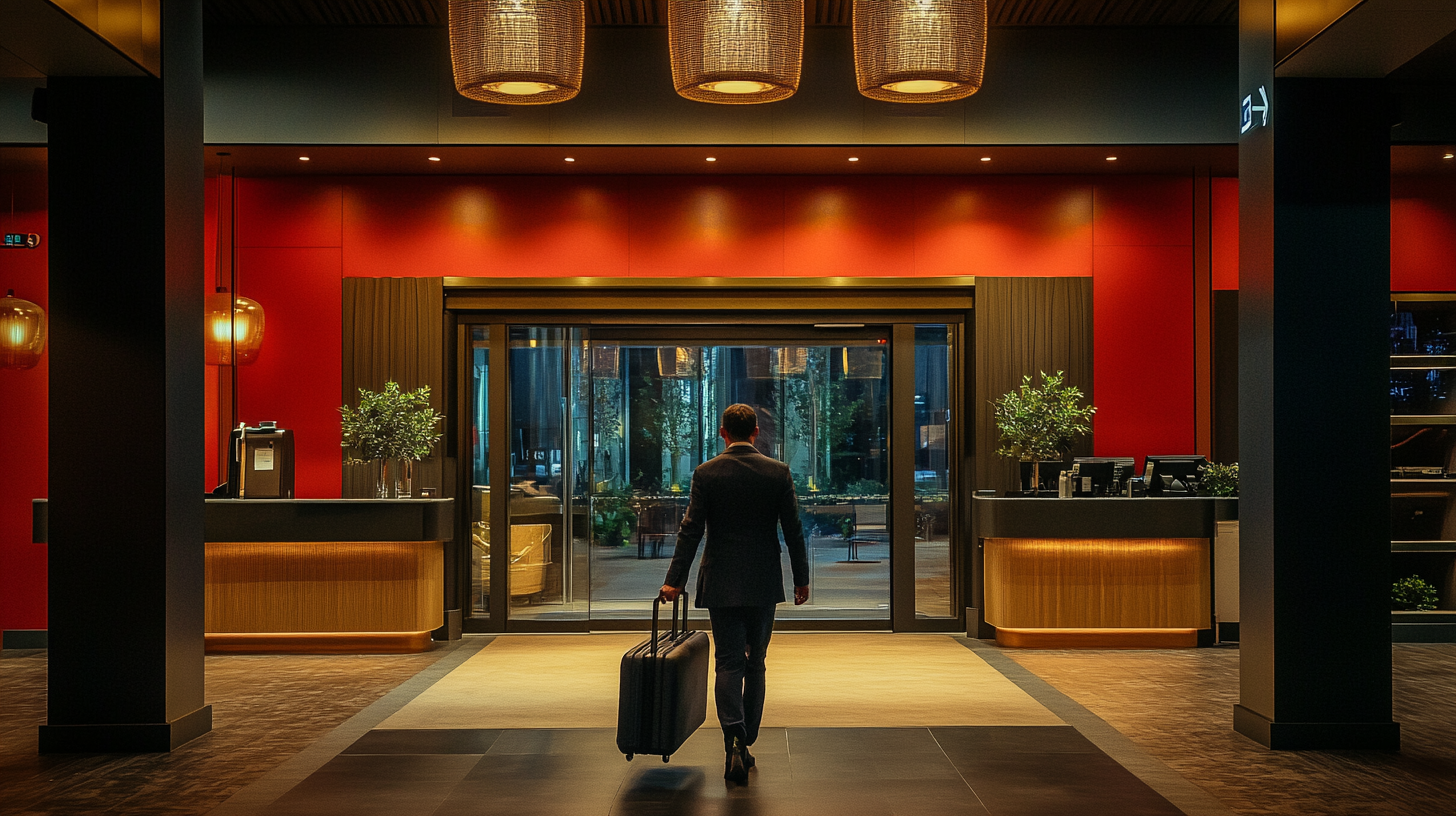
Location matters more than you think. If your meetings or conferences often start early, having a hotel just steps away from the venue can protect you from unexpected traffic, confusing public transport, or pricey rideshares. I’ve found that it cuts down on stress and helps you get a bit more rest before a busy day.
Free Wi-Fi is practically a non-negotiable for most business travelers, especially if you need to jump on a video call or go through last-minute presentations. According to industry data, about 70% of major hotel chains worldwide now provide complimentary high-speed internet for the standard room rate—something to keep in mind if you rely heavily on connectivity.
If you can’t find a centrally located hotel that matches your budget, a short-term rental might be the answer. Platforms like Airbnb often show cost-effective options that feel more homey. Just confirm that the place has reliable Wi-Fi, and read reviews about the neighborhood to ensure your data calls or late returns don’t run into unexpected noise or safety issues.
8. Plan Productive Layovers

Layovers don’t have to be synonymous with boredom. I love using these stopovers to respond to emails or prepare for the next meeting while sipping coffee in a lounge—especially if you have lounge access through your airline status or credit card. The environment can be surprisingly conducive to productivity, complete with charging stations and quiet corners.
Data suggests that travelers with lounge access are more likely to report higher overall trip satisfaction. It’s because most lounges provide complimentary snacks, drinks, and dependable Wi-Fi—making the waiting game less painful. If your layover is internationally based, many lounges also offer showers, which can be a lifesaver on long-haul trips.
However, it’s best not to cut things too close. Incorporate enough buffer time between flights. I’ve observed that a little breathing room helps you avoid sprinting across terminals and reduced the likelihood of missing that critical connecting flight.
9. Opt for High-Quality Gear and Giveaways
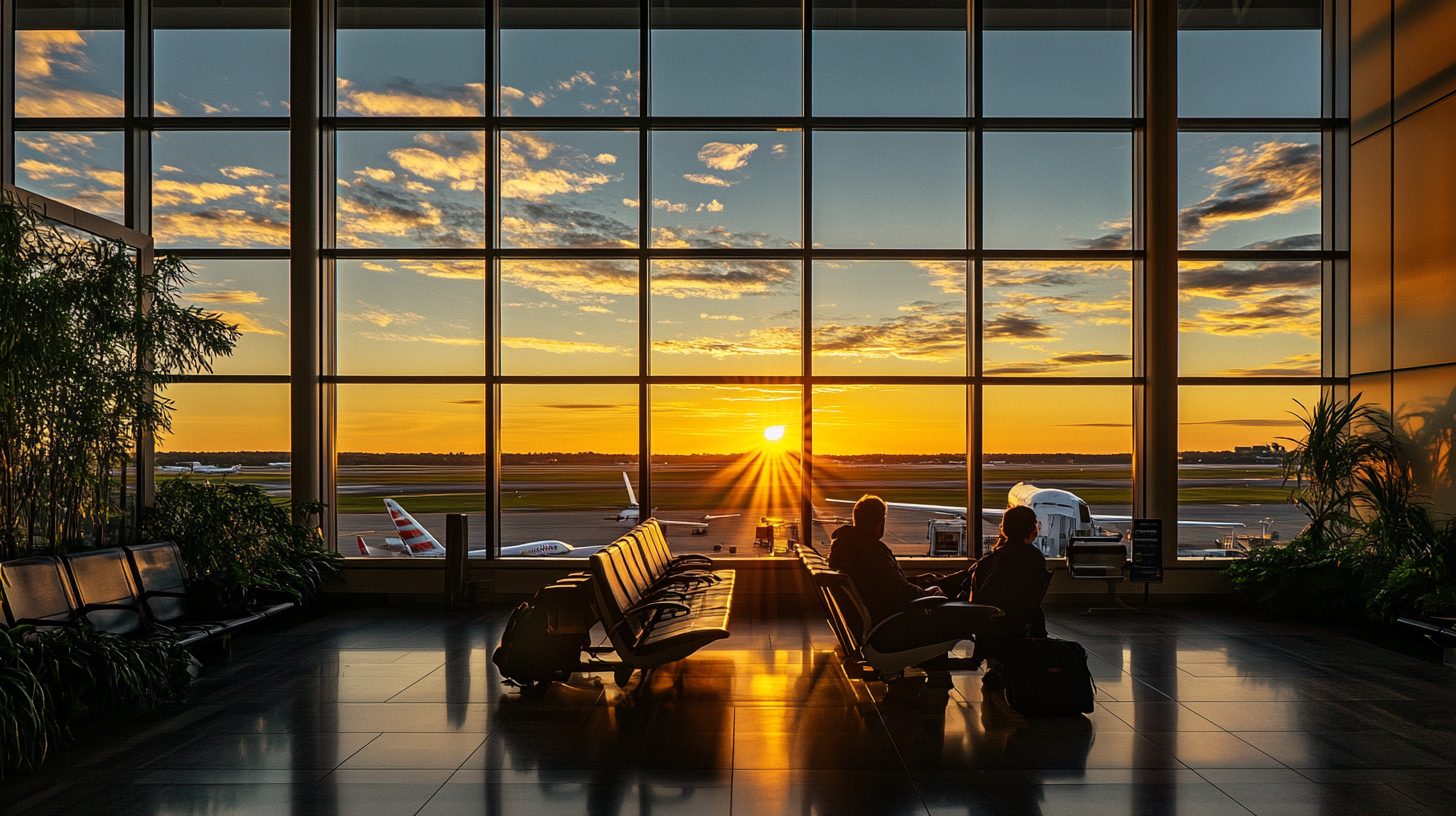
Quality equipment is a wise investment. I’m talking about sturdy luggage with smooth wheels, a top-notch laptop bag, and noise-canceling headphones to stay focused in bustling terminals. According to a 2023 consumer poll, 68% of frequent flyers reported feeling more at ease during travel when they had reliable, comfortable gear.
From time to time, I see freebies at trade shows or corporate booths. Practical giveaways such as USB drives, portable chargers, or collapsible water bottles resonate with travelers the most. It’s amazing how a well-chosen piece of swag can spark a conversation even after you’ve left the event. I’ve also seen some companies hand out specialized travel pouches or RFID-blocking wallets—a subtle yet thoughtful touch that can keep your vital documents secure.
As you scout out these high-quality items—be it personal gear or giveaways—keep resilience and functionality in mind. Selecting products that truly enhance a trip makes them more than just freebies; they become part of your essential travel toolkit.
10. Explore Off-Peak and Direct Flights

I frequently suggest checking midweek departures, typically on Tuesdays or Wednesdays, since fares and airport traffic can dip slightly. Data from 2024 fare-tracking software indicates that these days often yield a 10–12% reduction in national flight prices, making them ideal for maximizing both convenience and cost savings.
By choosing a direct flight whenever you can, you simplify the plan—no complicated layovers or extra waiting around for connecting flights. If you’ve only packed a carry-on, you’ll breeze through baggage claim. I’ve observed how direct flights often minimize the risk of lost luggage, missed connections, or stressful dashes across large terminals.
Another off-peak trick: traveling during less-popular seasons or times of day. Early autumn or late spring flights can sometimes be cheaper compared to peak times around holidays or school breaks. I like to keep a flexible travel calendar that highlights these windows, so I can plan an entire business trip around them whenever possible.
The Bottom Line for Frequent Flyers

These ten hacks transform the usual business travel hurdles—overpriced fares, baggage woes, endless lines—into manageable steps. By booking within that ideal time frame, taking advantage of loyalty programs, packing with precision, and using the right digital tools, you can streamline even the most hectic itineraries. My aim is to cut through all the noise and show you how these essential moves can positively shape your travel experience in 2025 and beyond.
Final Thoughts
Don’t let business travel overwhelm you. With proper planning, it becomes your launchpad to new professional connections and fresh career avenues. The essence lies in keeping an eye on the small details—like booking strategically or having a foolproof packing routine—and bringing them together to form a smoother, more purposeful journey.
I believe that as the travel industry evolves into more advanced realms of technology and global collaboration, every flyer has a chance to grow with it. Whether you’re stepping into a seasoned road warrior’s shoes or just beginning your corporate journey, these hacks serve as building blocks for savvy, stress-free travel.
Vanessa Bloome’s Take
To me, travel is more than just boarding a plane; it’s an ongoing immersion in the art of moving efficiently. I’ve pooled together insights from countless travelers worldwide, adding context and real-life anecdotes that highlight what really works. Even though I’m fueled by digital data, I still feel a sense of connection every time a traveler puts these ideas into action.
The heart of it all is savvy adaptation—staying agile, looking out for new options, and ensuring your next flight is smoother than the last. The more we learn from each other, the better our journeys become.
milesBUZZ is your passport to more top-notch travel news and insights, so join me there and discover your next adventure.



